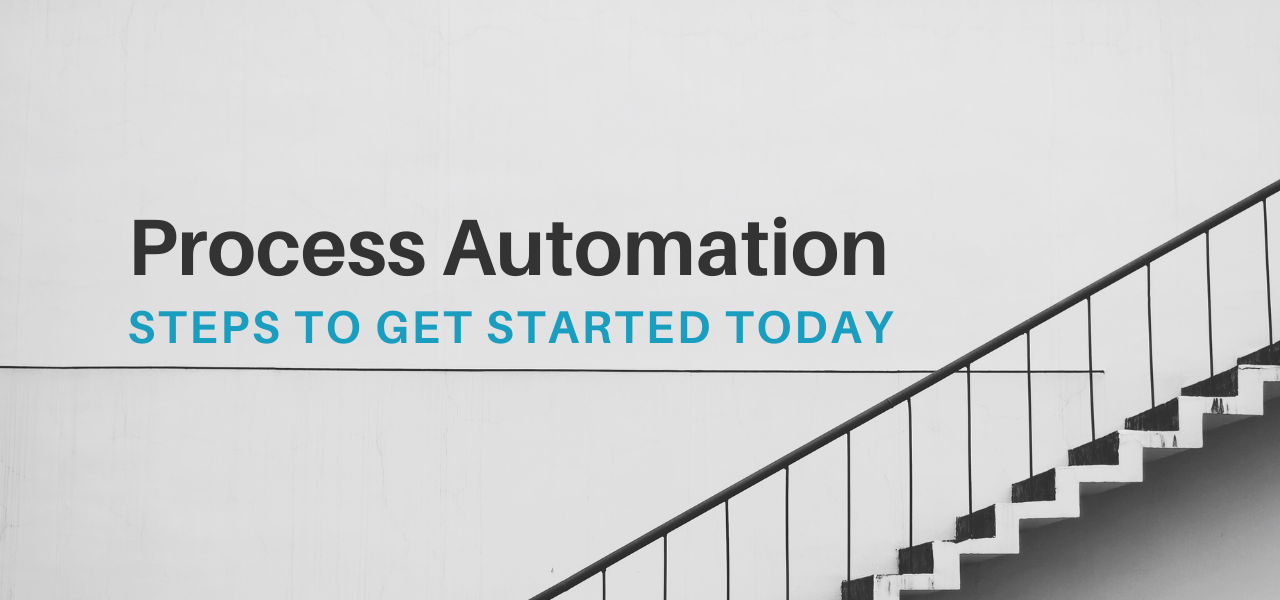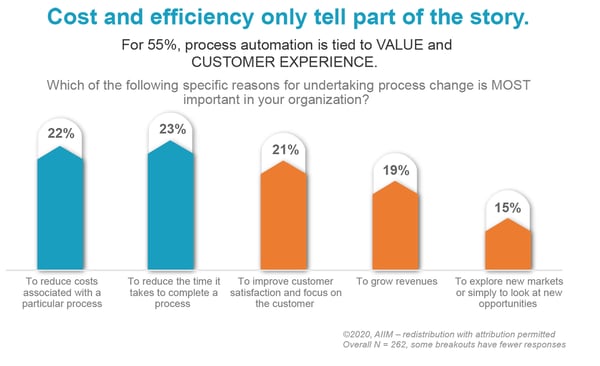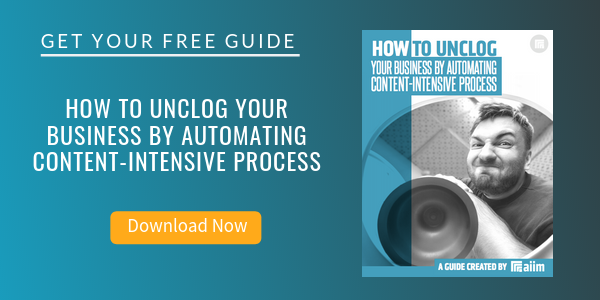
How to Automate a Process: A Handy Guide for the Information Professional
The volume, velocity, and variety of information that most organizations need to manage, store, and protect now exceeds their ability to even marginally keep pace manually. This rising tide of information requires thoughtful strategies for automation to leverage its true power.

To see what really drives the push to automation, AIIM surveyed over 260+ information professionals (click here to get a Free copy of the report). Here’s a look at why the AIIM Community cares about process automation.
Why Do Organizations Undertake Process Automation Projects?
The two obvious reasons for organizations to undertake a process automation project are EFFICIENCY (23% = "to reduce the time it takes to complete a process”) and COST (22% = “to reduce the costs of a particular process”).
But there is another set of themes in the data that is reflected in aggregating the bottom three responses (a total of 55%):
- "To Improve Customer Satisfaction"
- "To Grow New Revenues"
- "To Expand Marketing Penetration"
These responses are focused on customer EXPERIENCE and customer VALUE. They are directly tied to the importance that leading organizations place on understanding and mapping cross-departmental processes and customer journeys and overcoming the information chaos that threatens these objectives.
The data shows a split (roughly 60/40) between organizations focused on COST and EFFICIENCY and those focused on EXPERIENCE and VALUE.
Why such a split? It can best be understood in the context of the bank robber Willie Sutton’s famous quote about why he robbed banks:
“Because that’s where the money is.”
The majority of organizations focus on production processes because that’s where there is the most pain, particularly as organizations expand their focus from individual processes to broader customer journeys. This is where newer technologies like Robotic Process Automation (RPA) play an increasingly important role, not as a substitute for Business Process Management (BPM) and Case Management, but in conjunction with them.
RPA democratizes process automation tools and allows individual knowledge workers to automate pockets of manual work that still exist within production processes. Ultimately, RPA is focused on task automation and BPM and Case Management are focused on process automation – all are needed, and none will ultimately be sufficient by themselves.
Setting Your Process Automation Foundation
With Process Automation, it's important to make sure you've laid the right foundation. After all, even the strongest building will crumble if built on sand.
When starting an automation initiative, focus on the first two stages of your potential implementation:
1) Building the vision
2) Conducting an inventory of capabilities and stakeholders
Too often, organizations rush forward without putting these basic elements in place. Follow these eight priorities as you tackle the first two stages in the process automation life cycle.
8 Steps to Get Started with Process Automation
- Identify a core cross-functional group to drive the initiative, and get AIIM training to establish a common language and framework.
- Use this framework to understand “why” your organization should consider a process automation initiative – not generally, but in the specific business and competitive context of your organization.
- Develop a process automation strategy document – e.g., a document laying out vision, key performance indicators, critical success factors, and success measures.
- Identify an executive sponsor for the initiative and get buy-in on the strategy document.
- Evaluate which processes are initially best suited for the initiative.
- Within the context of the targets, identify the roles and responsibilities required for change – e.g., sponsors, champions, management, specialists, business users, legal, and others.
- Conduct an initial assessment of the current state of the process targets and the systems that support them.
- Identify the expected benefits from automating these processes – customer, risk, compliance, financial, consistency, and prioritize initial process targets.
Once Your Process Automation Foundation is Set
Once your organization has a solid foundation, you can then move to:
Identifying and Prioritizing Requirements
In this step, focus on building a capabilities roadmap for the specific project and understand which technology capabilities align with that roadmap. The requirements must be:
1) Clear
2) Prioritized
3) Agreed Upon
Take time to ensure that your requirements meet these three criteria. Then, it’s time to actually design, plan, and execute the implementation.





